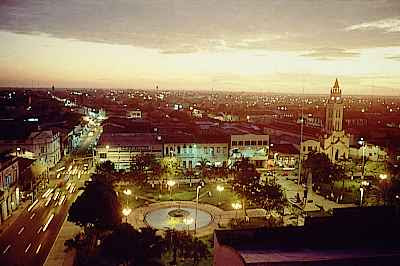This dish is one of the main and typical dishes of Peruvian food and it was first created around the XIX century around Lima, the capital of Peru. The dish has strong influences from oriental food, and also from Creole food or “Comida criolla” which is the term used in Peru to reflect the mix of the culture that came from Africa from the slaves that the Spanish brought at that time, and Peruvian natives.
The oriental (specifically Chinese) influence is reflected in the technique of cooking in a frying pan ata high heat, not kwon as “saltear” or leaping. The dish consists of strips of sirloin marinated in vinegar, soy, and other species, which are stir fried with red onions, parsley and tomatoes. This is served with rice and fried potatoes, although initially the potatoes were just boiled, now the dish is mostly accompanied with fried potatoes.
This dish is very common in Peru and almost in every Peruvian house is cooked at least once a week or every two weeks because is easy to make and the ingredients are also very common and accessible in Peruvian food (most of the times a less expensive meat is used, for homemade Lomo Saltado). Also in almost every Peruvian restaurant that exists around the world you can find this dish in the menu, and in contrast with the ceviche that has many varieties, the “Lomo Saltado” is prepared the same every time, the only thing that varies is the seasoning and maybe the presentation (sometimes the meat is placed over the rice and the potatoes so that the soak all the sauce).
In Peru is very common to put a bit of “aji Amarillo” or the Peruvian version of chille in the sauce of the sirloin, so the dish a little spicy (every dish in “Comida Criolla” or creole food has a bit of spice) but regularly the restaurants give you the chilli sauce on the side, specially for tourists that are not used to eat such spicy food so you don’t have to worry about this fact!!

























































